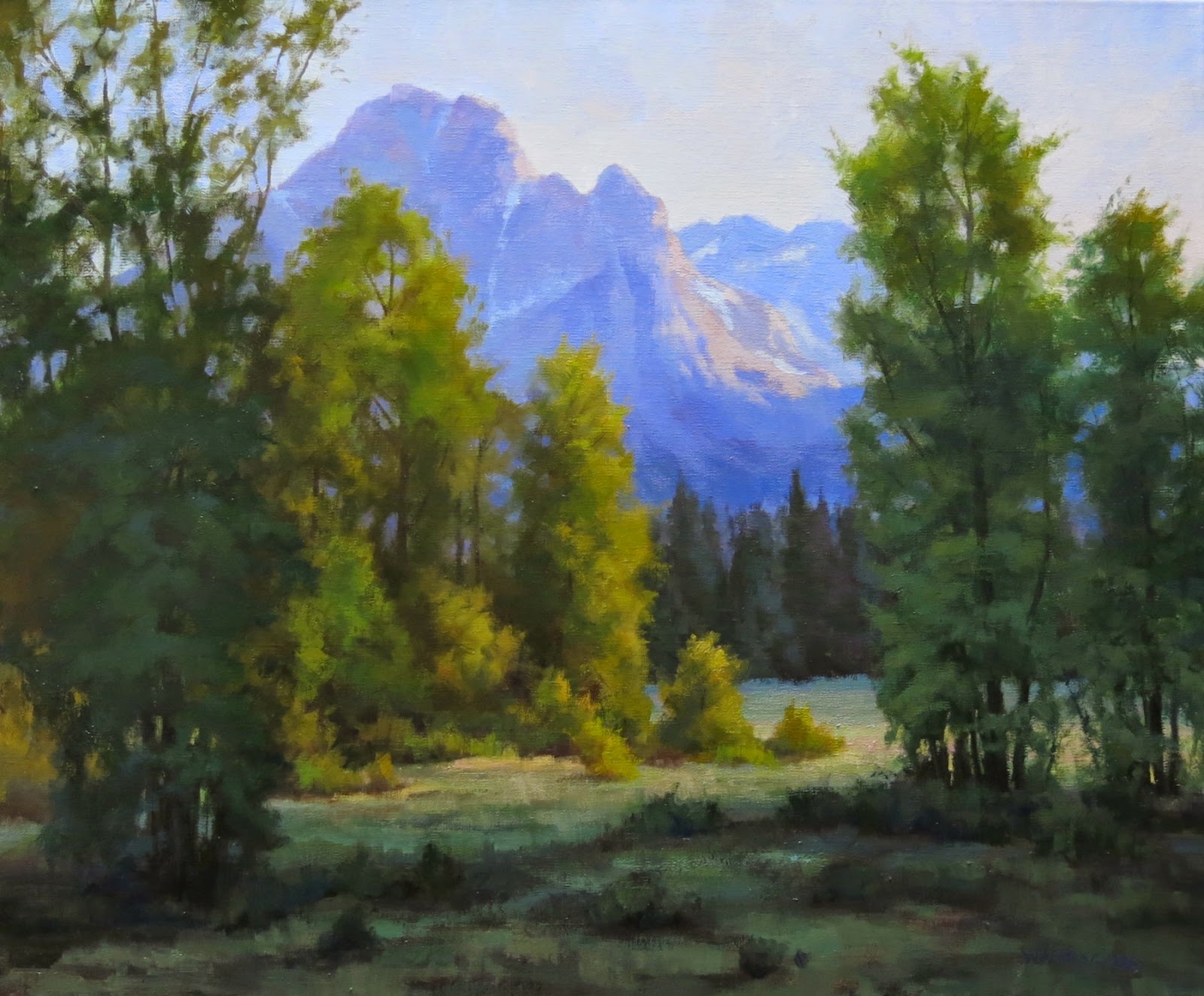Plein air painting or painting on location has become a "thing" for landscape artists. All the talk, the term plein air, has trickled down to the masses. Competitions, workshops and so on have reinvented the basic idea of plein air painting. With rare exception until recently the process of painting on location was to learn, create studies, explore ideas, to then take into the studio for a work of art that would eventually find it's way to the gallery wall and then on to a collectors home. It was a long journey that took time and thought.
With the last 20 year or so, reinvention of the plein air movement, artists, organizations and collectors have put on the pressure to create finished, super paintings. With all the "painting process plates" of value, composition, design, color, edges etc. in the air, it's tough in the field not to drop one or two. For the beginner it's almost impossible. With that pressure the simple pleasure of painting on location can be lost.
Admittedly I enjoy the pressure of a plein air competition. It forces me to finish each painting, knowing I will be judged by the formal juror and all the other artists.
During last years event in Carmel I made an effort to paint scenes that offer the collectors a nice selection of local views with the mood of the day, highlighted. Below is an example of catching the incoming fog bank off the ocean as it drifts up the rural Carmel Valley.
Carmel is a tough plein air event because you never know what the day will bring as far as the light. It's not unusual to wake up the morning, a thick layer of fog hanging over the trees. Tempting as it is to tuck down in the warm blankets, I jump up and dash off to paint. I didn't mention yet and some may not know, time is fleeting. In this event we have 2 days to finish as many paintings as possible. Most artists finish at least 4, often as many as 6 or 7.
Here is one morning set up of all my gear and the view I picked to work with.
At this point the painting is pretty well figured out and nearly finished. It's time to move on to the next location and start again.
Talk about a change in the light! Just a little while longer and bright sparkling light is bouncing off the sand and sea. While painting on location it's a good idea to at least have a guess where the light is heading and the weather in general for the day. This way you can paint where the light is headed, not what you see when you first set up. Then you have a bit more time to paint the scene before it's entirely gone. Again, this is very tough for the artist first starting to paint on location, unexpected clouds can ruin their experience. My advice to them would be to take that sunlit canvas off the easel put up a blank one and create a new study of the cloudy day. Think of the learning possibilities, not the fact that your original scene is gone with the light.
At the end of a plein air competition all the artists frame and hang their paintings. You can see two of the paintings that you saw in process, framed and on the wall in this photo.
If you decide to venture out painting, give yourself the freedom to explore, enjoy and paint with pleasure. Sir Winston Churchill, wrote a lovely little book "Painting As a Pass Time", on the joys of plein air painting, saying eloquently what we all feel struggling out of doors.

















































